A-Z of Car Stuff
This is one in a series of posts on cars, drivers, designers etc. that have interested me over the years. I’ve bored my family and friends with this stuff for years – now it’s your turn!
See A-Z of Car Stuff page for more posts in this series.
So, what’s so special about British Plastic?
A while back I bumped into a very nice chap at Donington Historic Festival who wanted to have a chat about our respective 911s. In the course of the conversation he almost guiltily confessed that although he really liked his 911 – his main passion was for “British Plastic”. His definition of “British Plastic” was British cars with Glass Reinforced Plastic (GRP) bodywork built during the ’50s, ’60s and ’70s.
In a scene reminiscent of an Alcoholics Anonymous meeting – I had to own-up to having had a previous predilection for British Plastic myself through brief ownership of a TVR Vixen. I obviously stressed that I had successfully overcome this affliction and had since moved firmly into German Metal.
The term “British Plastic” stuck in my head as it reminded me of the plethora of interesting cars that were around (and were occasionally on my shopping list) during my “plastic period” in the late ’70s. I consequently thought it merited a post or even two posts under my A to Z of Car Stuff page:-
British Plastic – Part 1 covers the following marques:-
- Ashley, Berkely, Caterham, Clan, Costin, Daimler Davrian/Darrian, Elva, Fairthorpe, Falcon, Gilbern, Ginetta, Gordon Keeble & Jensen
British Plastic – Part 2 continues with:-
- Kougar, Lenham, Lotus, Ogle, Marcos, Ogle, Peerless, Piper, Reliant, RGS, Rochdale, Tornado, Turner, TVR, Unipower, Warwick and WSM
Read on……………….
Fantastic In Plastic!
In the BCF era (the era Before Carbon Fibre) – car enthusiasts, budding car designers and even well established car manufacturers experimented with Glass Reinforced Plastic as an alternative to steel and aluminium to create interesting, sometimes pretty and occasionally pig-ugly lightweight, rust resistant bodywork for a multitude of sports, saloon and race car applications.
At one end of the spectrum were relatively low volume manufacturers like Berkeley, Costin, Elva, Fairthorpe, Gilbern, Ogle and Rochdale.
The middle ground was occupied by companies that were (and in rare instances – still are) producing a higher volume of cars including Caterham, Ginetta, Lotus, Marcos, Reliant and TVR.
Bigger manufacturers such as Daimler and Jensen were however not immune from dabbling with fibreglass with such models as the Daimler Dart (aka SP250) and the Jensen 541 and CV8.
The smaller start-up and low volume companies had to manage on shoestring budgets forcing their entrepreneur owners to combine fibreglass mouldings with readily available proprietary engines, transmissions, suspension/braking systems and sometimes entire rolling chassis from bigger car manufacturers.
Some companies took things a stage further by designing and building their own ladder or space-frame chassis and three companies (Berkeley, Rochdale and Lotus) even went down the radical route of using a fibreglass monocoque onto which mechanical components were directly bolted or bonded-into the fibreglass (see Berkeley Sports SA322, Rochdale Olympic and Lotus Elite).
To keep costs low and to enable buyers to avoid the dreaded purchase tax – many cars were sold in kit form enabling proud new owners to source and install mechanical components themselves using their own free labour. The quality of basic kits could vary almost as much as the skills of the builders and this led to a generally unfair stigma building up around “kit cars”.
Thankfully a number of companies rose above this stigma and went on to establish themselves as long standing specialist car manufacturers but many, many more disappeared due to cash flow issues and increasingly stringent safety standards to which they could not economically comply.
This post concentrates on just some of the “British Plastic” sports and saloon road cars of the ’50s, ’60s and ’70s.
Ashley
To many – the name Ashley is synonymous with a range of fibreglass panels (mainly one piece bonnets and hardtops) used to replace metal components on cars such as the Austin Healey Sprite and E-Type Jaguar but in reality – they also produced a number of complete Ashley cars as well as bodies and chassis.
The company was founded by Peter Pellandine and Keith Waddington in 1955 in Loughton, Essex and the first cars they created were the Ashley 750 and the Sports Racer.
The 750 initially utilised a short wheelbase Austin 7 rolling chassis with its Austin 747cc engine but it was later adapted for use with the longer wheelbase Austin chassis.
As suggested by its name – the Ashley Sports Racer was really intended for the race track rather than public roads and it could be mated to a variety of chassis of different dimensions.
The rights for manufacturing short wheel base 750 and the Sports Racer moved with Peter Pellandine when he left to found Falcon Shells resulting in the cars being rebadged and marketed as the Falcon Mk 1 and Falcon Mk 2 respectively.
Coming back to Ashley – car production continued with the launch of the 1172 model in 1958 which could be mated to Ford 8hp or Ford 10hp chassis both using Ford’s then current 1172cc side-valve engine. Ashley also offered their own Regent chassis as an alternative to using the Ford chassis.
The Ashley Sportiva launched in 1960 was really a restyling exercise of the 1172 again with the option of Ashley’s own chassis and Ashley also created one Sportiva using a Morgan +4 chassis in 1962 but this remained a one-off prototype.
Apart from producing Ashley cars – the company also provided a range of fibreglass body parts and other special build components which I’m pleased to say are still being produced to this day. Ashley hard tops were created for Austin Healey Sprite and related MG Midgets in standard or fastback form.
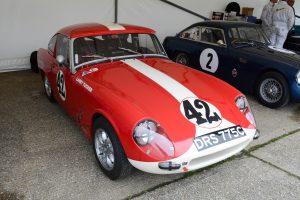
Fibreglass replacement one piece bonnets were also built for the Mk 1 Sprite and for the E-Type Jaguar and complete front ends for the Austin Healey Sprite and related MG Midget. A fastback fibre glass roof extending over the rear luggage compartment was also developed for Spridget models.
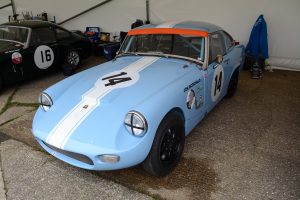
Interestingly after going out of production for some time Ashley components and modifications have been manufactured again since 2010 thanks to Motobuild Racing under the alternative guise of AshleyGT.co.uk providing parts to convert Spridgets into Ashley GTs, producing replacement fibreglass front-ends for Triumph Spitfires and also parts to prepare Austin A35s and A40s for racing.
It’s great to see Ashley continuing to keep rusting Spridgets and Spitfires on the road and track along as well as supporting the increasingly popular historic saloon racing scene.
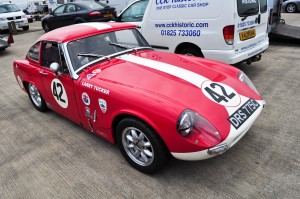
Berkeley
Berkeley Cars was founded in Biggleswade, Bedfordshire in 1956 through a collaboration between Lawrence Bond and Charles Panter. The idea was to fill the seasonal gaps in Panter’s Berkeley Coachworks caravan manufacturing business with the creation of simple, lightweight sports cars in 3 and 4 wheeler form which could be used on the road or raced in 750 club events.
The resulting cars which (with the exception of the swan-song Bandit model) were powered by motorcycle engines from a range of British manufacturers proved to quite successful and popular in the UK and in the USA but when the caravan business collapsed – cash flow from car manufacturing wasn’t sufficient to keep the company solvent and it went into liquidation at the end of 1960 having produced around 4,100 cars in total.
These diminutive little cars look like scaled down versions of Midgets and Sprites of the same period but their very light weight construction and use of readily available and easily maintained British motorcycle engines made them quick, nimble and economic cars to drive.
The first production model the Berkley Sports SA322 built during 1956 and 1957 was of fibreglass monocoque construction thereby beating the Lotus Elite by 12 months to lay claim to being the first fibreglass monocoque car.
The Berkeley Sports was powered by an Anzani twin cylinder two stroke 15hp 322cc engine and featured independent coil sprung suspension, hydraulic drum brakes and had an incredibly light weight of just 247kg. Even with this relatively small motorcycle engine the car’s god power to weight ratio made it a brisk performer as demonstrated by Stirling Moss in a pre-launch run around Good wood race track in the summer of ’56.
The subsequent SE328 model used an 18hp 328cc Excelsior engine and overly optimistic Berkeley publicity claimed it could do 70mph and achieve 70mpg. Performance and handling were deemed adequate for another Moss (Stirling’s sister Pat) to enter the Berkeley in the 1958 Liege-Brescia-Liege Rally. Unfortunately – after leading the race for a while this car and the 5 other factory entered Berkeleys entered failed to finish the rally.
Other models followed in the form of the Sports, Twosome, Foursome, B95, B105, QB95, QB105, three-wheeler T60, T60/4 and B65 using a variety of motorcycle engines from Anzani, Cotton, Excelsior, Greeves and Royal Enfield.
In an attempt to join the big boys – Berkeley commissioned John Tojeiro (designer of the AC Ace) to design the 997cc Ford 105E Anglia engined Bandit. Unfortunately design and development costs for this car pushed the company more quickly towards liquidation having only built 2 Bandit cars.
This great little marque has an enthusiastic following in the form of the Berkely Car Club.
Caterham 7 (nee Lotus 7)
NB: Strictly speaking – the Caterham 7 nee Lotus 7 is not a fully fibreglass car. It did use fibreglass bodywork components in the form of the doors and nose cone at various times but the only in Series 4 form could it be really classified as a fully fibreglass bodied car. As the Series 4 marked the cross-over between Lotus and Caterham however – I’m using this as my excuse to include this important car in the British Plastic post.
In 1973 Caterham Cars switched from being a Lotus agent to become a Lotus 7 manufacturer when Colin Chapman decided to cease production of the Lotus 7 and Caterham founder Graham Nearn acquired the rights to continue production of the renamed Caterham 7.
Lotus originally developed the 7 from the preceding all alloy bodied Lotus 6 in 1957 and it was gradually evolved and improved through Series 1, 2, 3 and 4 up until 1973. Following Chapman’s mantra of “simplify – then add lightness” – cars initially weighed in at an unbelievable 329 kg which meant that pretty well any power plant was going to deliver a phenomenal power to weight ratio enabling the car to perform really well on road or track with aerodynamics being the the major enemy.
Chapman’s decision to sell the rights to manufacturing the Lotus 7 was based upon his increased focus on top flight racing and the inexorable up-market movement of his road cars. Little did he know at that time that Caterham would still be manufacturing the car to this day!
As an aside – it’s interesting to note that Lotus sold the rights to Lotus 7 production not just to Caterham but also to another of their their agents – Steel Brothers Ltd. in Christchurch New Zealand. Steel Brothers studiously built up and sold all 95 of the Series 4 kits they were supplied with before opting to develop their own version – a wide bodies Series 4 called the Super 907 which used the Lotus twin cam 907 engine. A deal to sell this new model in the USA collapsed so only one Super 907 was built.
Also initially continuing to produce Series 4 cars – Caterham astutely recognised that the styling of the earlier Series 3 was what their enthusiastic customers really wanted so the rather boxy and frankly ugly fibreglass bodied Series 4 was replaced by the earlier Series 3 style cars in 1974.
It’s wonderful to see that Caterham Cars continuing to thrive under the wider Caterham Group owned by Tony Fernandez and is still producing the the wonderful Lotus 7 Series 3 styled cars in a variety of states of tune for road and race track use.
Clan
The Clan Crusader was a lightweight car using Hillman Imp mechanical components to create a pretty fast and nimble little motor. Between 1971 and 1974 around 315 of these fibreglass monocoque cars were produced in Washington, County Durham.
Initial design was carried out by former Lotus men Paul Haussauer, John Frayling and Brian Luff and the car went into production thanks to a government grant.
Unfortunately – limited finances, strikes, parts shortages and new government taxes killed-off the fledgling company in 1973 and various attempts to revive it since have failed.
Not the prettiest of cars but by all accounts – quite lively performers thanks to the light and unable Imp engine. Better continuity of engine supplies, further development and better cash reserves could have resulted in the Clan becoming a small scale competitor to the likes of Lotus in the field of “British Plastic”! The marque is enthusiastically supported by the Clan Owners Club which has an informative and professionally presented web site.
Costin Amigo
Designed by Frank Costin (the Cos out of Marcos) the Costin Amigo shared some of the same design features of early Marcos creations – most notably a lightweight but very strong wooden monocoque with fibreglass bodywork. Costin’s use of marine plywood in the construction the monocoque and the wonderfully aerodynamic bodywork came his previous employment in designing lightweight aircraft for De Havilland.
The car utilised a humble 2.0 Litre Vauxhall VX 4/90 engine which thanks to the car’s light weight and slippery aerodynamics took the car to a top speed of 137 mph with very good fuel economy. Transmission, rear axle, suspension and brakes were also sourced from the Vauxhall Victor with some components being heavily modified to meet Costin’s design specification.
The design brief for the Amigo was to create a driver friendly (hence the Amigo name), safe, lightweight, powerful car that could cruise comfortably all day long at 100 mph. The car certainly achieved this brief and was all set to be sold through 4 appointed distributors with basic servicing available through Vauxhall agents but it’s high price of £3,000 in comparison to cheaper competition resulted in just eight cars being built so these are very rare birds indeed!
Daimler Dart/SP250
For such a traditional company as Daimler I always thought that the Dart (or SP250 as it became known when Dodge claimed rights to the Dart model name) was a strange but wondrous creation. With it’s low slung nose, cheesy-grin-grille and cheeky headlights sitting proud of the bonnet line it looks like an aristocratic relation to the Frogeye Sprite that would be more explicable if it wore the Citroen badge of Gallic eccentricity.
Moving rearward from the whacky front end you are confronted by the squared-off boot and jutting finned rear wing extensions and it’s at this point that any remaining vestige of propriety just flies out of the window – it’s a stylistically bonkers car!
Only when you examine the sophisticated cockpit and wonderful engine bay does any sense of decorum return. The cute leather bucket seats and subtle dashboard define this as a quintessentially British car. Then you open the bonnet to reveal the most beautiful small capacity V8 known to man.
During the period that Daimler was owned by the Birmingham Small Arms company (BSA) – Edward Turner (the man who created the iconic Triumph motorcycle engine) designed the Dart car and its lovely burbling V8. An almost certainly apocryphal legend has it that pistons are interchangeable between Triumph motorcycle engines and the Daimler V8!
In its earliest A-spec form – the chassis of the Dart (based on a Triumph TR3) was renowned for being a tad flexible but this was improved in later B-spec and C-spec versions. Body styling wasn’t and still isn’t to everyone’s taste but I just love them. They’re a great mix of British design eccentricity and engineering excellence.
Sadly – the car fell victim to BSA’s sale of Daimler to Jaguar, The Dart and its V8 engine created a problem for Jaguar who already had a more expensive sports car in the form of the E-Type and they already had a good engine in the form of the XK unit. Having a cheaper sports car and an equally performing engine provided rather pointless internal competition within Jaguar and it was inevitable that existing Jaguar cars and engines would win out leaving the Daimler identity to survive simply as luxury badge engineering.
Interestingly there is also a direct link between the Daimler Dart and the Reliant Scimitar featured elsewhere in this post. A private design commission resulted in a Dart rolling chassis being clothed by Ogle Design in very different closed coupe bodywork which was later adopted by Reliant as their new Scimitar model albeit with a Reliant Sabre chassis and Ford engine!
This strange twist saw one manufacturer (Jaguar/Daimler) shutting down their experiment with fibreglass sportscars only for another (Reliant) to pick up the baton and take it to new levels.
Davrian to Darrian
Davrian Developments built cars from 1965 to 1983 initially from their base in Clapham, South London before moving production to Tregaron and then Lampeter in Wales.
Designed by Adrian Evans and ex-F1 Ferrari driver Mike Parkes the cars consisted of a fibreglass two-seater monocoque coupe utilising Hillman Imp, Mini and Ford Fiesta engines mounted in mid and rear engined positions.
Early cars were known as the Davrian Demon or Davrian Imp changing to Davrian Dragon in the 1980’s. During their production run – the cars were constantly developed from Mark 1 to Mark 8 models and during that time they also shifted from being purely kit-cars to fully built cars.
The mid or rear engined configuration and fibreglass monocoque construction of these diminutive gave them a wonderful power to weight ratio ideally suiting them for use in track racing and rallying alike.
As with many other contemporary small production manufactures – cash flow issues brought about the demise of Davrian in 1983 but the rights to production were then bought up by Will Corry and production continued with the car renamed the Corry and with manufacturing moved to Lisburn in Northern Ireland.
Styling changes to the Corry were introduced by Tony Stevens were combined with consolidation on Ford Mk III engines and suspension to create what was primarily a race car.
In 1986 the Davrian factory was brought back to life with the launch of the Darrian which was a highly modified version of the original Davrian using mid mounted Ford, Rover V8 and Vauxhall 16 valve engines.
Darrian Cars have built and continue to build highly competitive cars for use in rallying and GT racing in their factory in Llangybi in Wales. In their current T90GTR model the Darrian still shows its evolutionary link to the original Davrian but it has bang up to the minute mechanical underpinnings including a 300bhp Millington 2.5 Litre 16 valve 4-pot racing engine.
One interesting side note is that Darrian also manufactured a short run of the marvellous French Plastic car – the Alpine A110 which for an all to brief period was a European rally legend.
Elva
Elva was founded in 1955 on the Kent coast by Frank Nichols. The name derived not from a mis-spelling of Elver (a young eel) but a derivation of “elle va” – French for “she goes”!
A wide range of models were produced for sportscar and single seater racing purposes before attention turned to road cars with the Elva Courier which was produced between 1958 and 1969.
The Courier was a lightweight two-seater open car which in its earlier from used MGA and even Riley engines fitted centrally in the chassis to ensure good balance and handling. The cars were enthusiastically raced in club events in the UK and in America .
In 1962 the rights to manufacturing the Elva Courier were bought by Lambretta-Trojan and manufacturing moved from Kent to the Trojan factory Croydon. This enabled Frank Nichols to focus on his racing Elva models which continued to be successful in sportswear and single-seater racing – especially Formula Junior.
Under Trojan ownership the Mk III Courier was sold as a fully assembled car featuring improved chassis, suspension and steering but still utilising MGA 1600cc engines. Trojan ownership also saw the development of a closed coupe model as well as the open cars. Later versions of the courier adopted the use of the bigger MGB 1800cc engine or the Ford Cortina 1600 GT engine.
There was one last tantalising flourish when the Elva BMW GT160 Coupe model was displayed at the 1964 Car Shows in London and Turin but only three cars were built as the attention of Trojan shifted towards building the first cars for Bruce McLaren’s new racing venture.
Ownership of the rights to manufacturing the Elva Courier changed again in 1965 when Ken Sheppard bought these from Trojan only for manufacturing to cease the following year after a total production run of around 500 cars. Sadly a last gasp development of a Ford V6 powered Cougar model did not generate enough financial backing to keep production going.
I rarely come across Elva Couriers these days but I guess this isn’t surprising given the relatively low production numbers and the fact that many were exported to America. A 50th Anniversary celebration of Elva at Donington Historic Festival in 2015 fortunately helped to entice a good turn out of road and race cars.
Another very interesting Elva model is the GT160 but sadly only three prototypes were produced. It featured a lightweight space frame chassis, mid-mounted BMW engine and bodywork designed by Trevor Fiore and built by Fissore in Turin with more than a hint of Fiore’s earlier design for the Monteverdi Hai. One car did race at Le Mans in 1965 but retired quite early-on.
Elva cars in both road and race form have a an avid following on both sides of the atlantic and they are well catered for by the informative Elva Cars web site.
Fairthorpe
Founded in 1954 by no less than Air Vice Marshal Donald Bennett – Fairthorpe Cars produced a number of lightweight fibreglass bodied cars in kit-cat and fully built form before production finally ceased in 1976.
The earliest Atom and Atomota models utilised motorcycle engines before being replaced in 1956 by the Electron – a two-seater sports car. The Electron was initially powered by a Coventry Climax engine before this was replaced with a Triumph Spitfire power plant and production of this model continued until 1973.
The Electron Minor was a lower powered Triumph Herald engine variant and the Electrina was a four-seater closed model with both using a Triumph GT6 chassis.
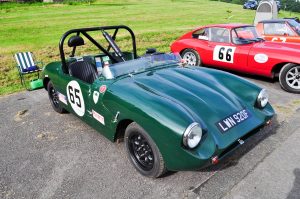
Other lesser known and more rare models such as the Ford Zephyr powered Zeta, the Triumph Vitesse engine Rocket were built between 1959 and 1967. Then from 1967 Donald Bennett’s son Torix joined Fairthorpe and this spawned the TX series of cars in S, SS and GT forms.
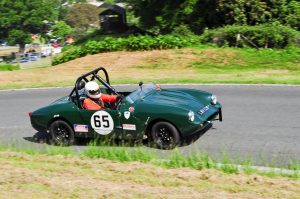
The Fairthorpe marque is supported along with other contemporary marques by the Fairthorpe Sports Car Club. This useful web site also provides register coverage for Turner, Tornado,Rochdale, Ashley and Falcon marques.
Falcon
Falcon Shells Ltd. was founded in 1956 by Peter Pellandine after he parted company with Ashley Laminates. Falcon MkI and MkII cars were based on Ashley 750 and Sports Racer models.
Parallel production kicked off in New Zealand when Peter Pellandine briefly relocated there between ’57 and ’59 whilst production continued in the UK but this didn’t stop production of the Mk2 Competition car in 1958 and the Mk3/Caribbean in 1959 (the best selling Falcon body shell).
In 1961 the newly renamed Falcon Cars create the four seater Bermuda and then the 1000 aka the Peregrine.
Before emigrating to Australia – Peter Pellandine sold the company to Mike Moseley which shifted the company base to Hatfield. Mostly diversified manufacture to boats, box windows and farm equipment along with their new 515 car model. An attempt to enter three 515’s into Le Mans in ’63 led to them being rejected by the organisers and Falcon Cars was eventually wound up in 1964.
For more details of this rare marque you can find the Falcon Register under the Fairthorpe Sports Car Club web site.
Gilbern
Gilbern Cars were built between 1959 and 1973 in the heartland of Welsh car manufacturing – Llantwit, Pontypridd, Glamorgan. Well it was the heartland then!
Founded by GILes Smith and BERNard Friese – yes you’ve guessed it the name was an amalgam of parts of their respective first names. As with many small car manufacturers of the period (and some bigger ones) Gilbern went through a number of changes of ownership in the endless search for profitability before giving up the ghost in 1973.
The little Gilbern GT utilised BMC running gear and an MGB 1800cc engine which gave it great performance and good fuel economy. It was succeeded by the larger Ford V6 engined Genie and Invader models which also raided the Ford parts bins for their running gear.
At the time I was looking to buy a car to replace my rusted and seized Austin Healey MkIII Sprite – I thought the Gilbern Invader represented really practical British Plastic with its full four seater configuration and meaty Ford V6 engine.
For mor information on this great marque go no further than the Gilbern Owners Club web site.
Ginetta
Ginetta have produced some great cars over the years and thankfully they still do. Originally established in 1958 by the four Walklett brothers in Woodbridge, Suffolk – the company has gone through various changes of ownership and different manufacturing locations.
I’ve always liked the original G4 which looked like a scaled down E-type but despite its diminutive size and small capacity engine – it was incredibly successful in the hands of racers such as Jim Clark.
Other Ginetta models including the Hillman Imp powered G15, Ford Kent, Ford V6 or Sunbeam Rapier powered G21, Ford mid-engined G12 and the V8 powered G10.
Through various ups-and-downs – Ginetta is still a thriving company building specialist sports and race cars which provide single marque race series and much needed young driver development.
For information on Ginetta cars ancient and modern and the exciting Ginetta racing scene – look at the informative Ginetta Cars web site.
Gordon GT & Gordon Keeble
John Gordon’s involvement in Peerless led him to link up with Jim Keeble to create the Gordon GT which was based on a modified Peerless chassis fitted with a Chevrolet Corvette engine and wrapped in an elegant steel body designed by up and coming Bertone designer Giorgietto Guigaro.
Re-badged as the Gordon Keeble – production cars were made out of fibreglass but they still retained their beautiful Italian styling. Only around 100 cars were made but thanks to an enthusiastic following a large number are still on the road.
I just think these are incredibly elegant cars and owning one must be such a privilege. I also love the fact that when Giotto Bizzarrini checked one out as the possible basis of what would become the Iso Rivolta the designer of the wonderful Lamborghini V12 engine decided to use the Corvette engine in virtually all of his subsequent creations including the Iso Rivolta, Iso Grifo, Bizzarini Strada and Bizzarrini Corsa.
For more detail on this great and rare marque look at the Gordon Keeble Owners Club web site and see my G is for Gordon Keeble post under A-Z of Car Stuff.
For more information on Giotto Bizzarrini and his creations see B is for Bizzarrini under A-Z of Car Stuff.
Jensen
Before they started building the beautiful Vignale styled, steel bodied Interceptor – Jensen built two fibreglass bodied four seater grand tourers in the form of the six cylinder 541 and the V8 CV8.
For more background on these fibreglass Jensens look at the Jensen Owner’s Club web site.
Jensen 541
Originally designed and developed in 1954 by Eric Neale as an aluminium bodied prototype – production 541s switched to fibreglass bodywork but retaining aluminium doors. Jensen 541 production continued until 1960 after which it was eventually replaced by the bigger and more powerful CV8.
The car utilised a somewhat mundane 4 Litre 6 cylinder Austin engine but when combined with the Jensen chassis and aerodynamically efficient bodywork – it was still capable of propelling the car to 125 mph. This made it one of the fastest full four seater cars of the period.
Transmission, suspension and other running gear also came primarily from Austin parts bins but included then rare four wheel disk brakes.
The rather quirky but handsome bodywork design has an enormous scuttle hinged bonnet which can be lifted to reveal the entire engine bay. It also features a radiator flap which can be opened by the driver to improve cooling once the big low revving engine has reached operating temperature.
I really like the 541 as it typifies British design ingenuity of the ’50s and ’60s. The body design is robust but no less elegant than Italian Carrozeria creations of the same period. Post war austerity forced designers to explore the use of readily available mass produced engines and other components but they succeeded in combining these into cohesive and desirable automotive objects.
Jensen CV8
The CV8 was built by Jensen between 1962 and 1966 and marked the manufactures adoption of big American (Chrysler) V8 engines to replace more utilitarian Austin units. These same engines also power the later Interceptor models.
Following the lead of the 541 – the Eric Neale designed CV8 used fibreglass bodywork with an enormous hinged front bonnet/wings assembly and aluminium doors.
A Chrysler Golden Commando engine was used in 5.9 and then 6.3 Litre forms usually mated to a Chrysler Torqueflite automatic gearbox giving the car an amazing 136 mph to speed.
The unusual twin Chinese Eye headlamps were originally meant to to have perspex covers to emulate E-Types, Ferrari Dinos and Alfa Spyders of the period. Unfortunately increased safety concerns over the perspex covers reducing headlight efficiency led them to being deleted from all of these models much to the detriment of aerodynamic efficiency and overall beauty.
I always quite liked the CV8 for it’s big engine and unusual styling but my taste now errs more towards the earlier 541.
Information Sources
As well as the excellent marque, club and register websites already referenced within this post – here are some publications which have also been useful sources of information:-
Guide To Component Cars by J. H. Haynes published by J. H. Haynes & Co Ltd
- A great little paperback book that I bought donkey’s years ago during my plastic period.
- It covers a whole range of kit cars from the period including Lotus, Tornado, TVR, Rochdale, Turner, Gilbern, Marcos, Ginetta and Elva – providing useful reviews and guidance on specifications.
Kleinwagen/Small Cars/Petites Voitures by Hanz -Ulrich von Mende and Matthias Dietz. ISBN: 3-8228-8910-5
- Essentially a coffee table book first published in 1994 with text in German, English and French.
- This book actually provides a wealth of information and photographs covering the history and evolution of small cars from the pre-war Austin 7 and Fiat Topolino through the 1950’s “Bubble” cars to modern small cars.
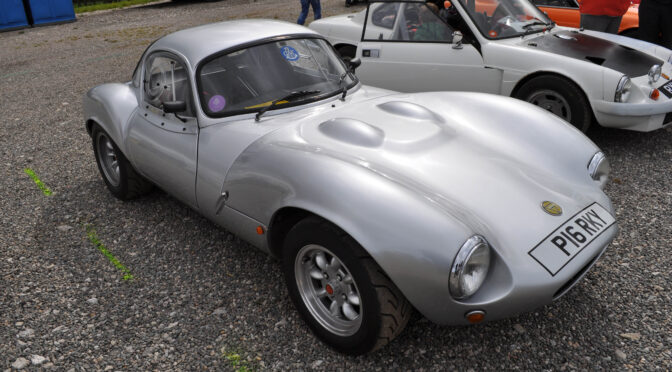
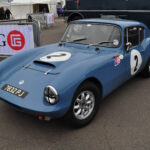
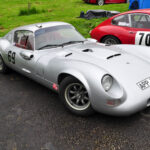


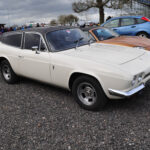
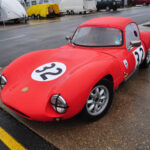
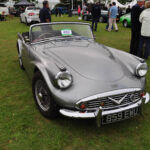

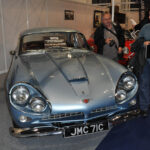

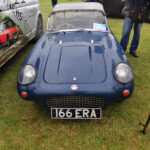
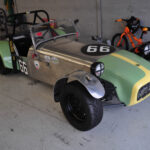
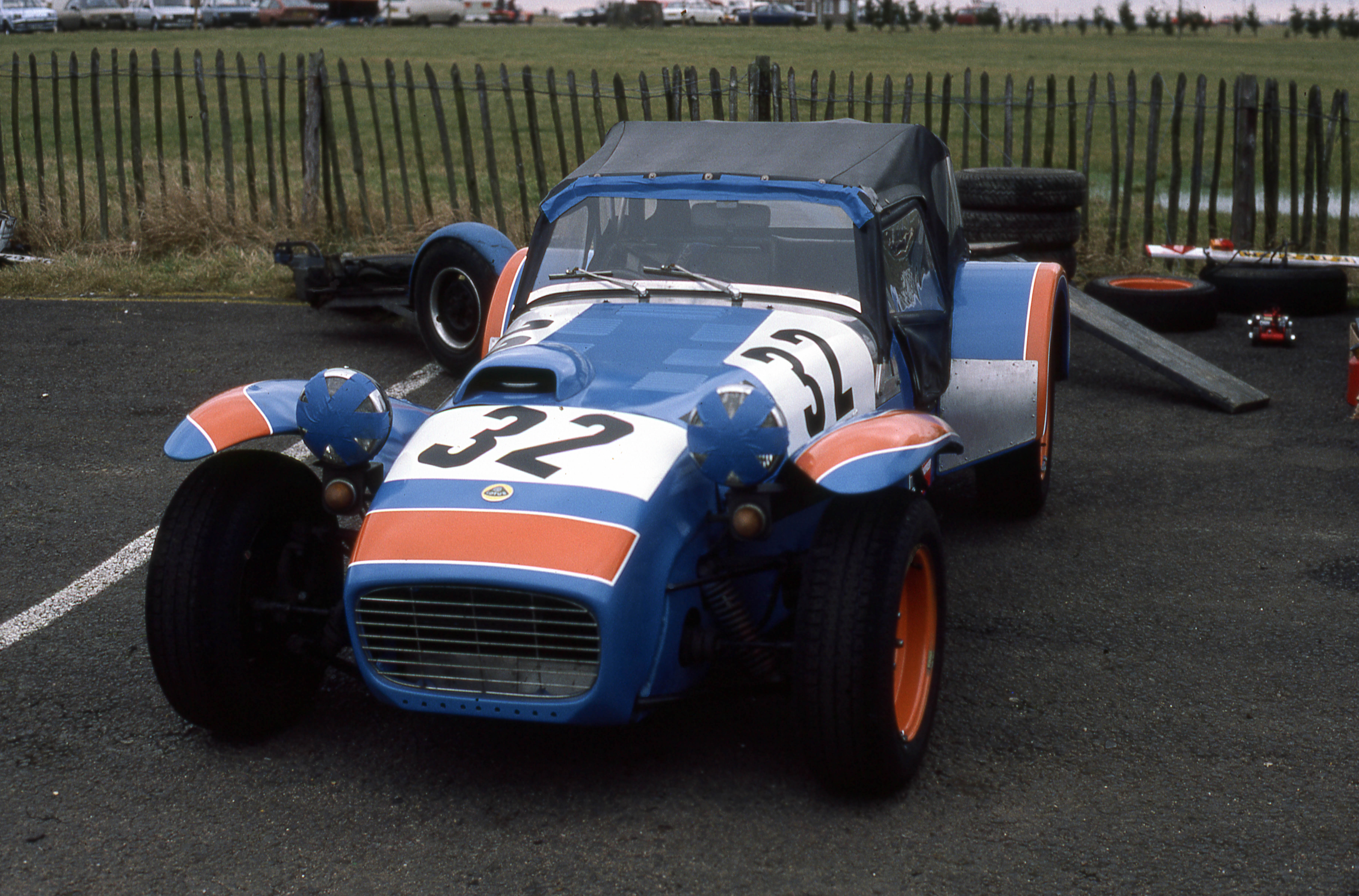
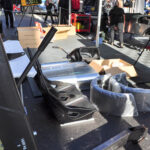
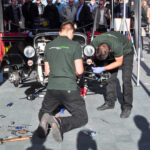
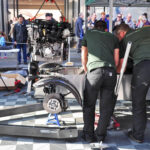


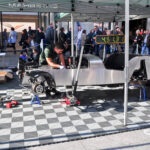
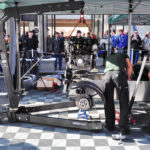

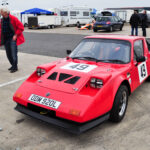

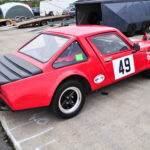
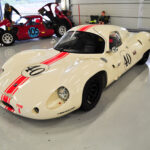
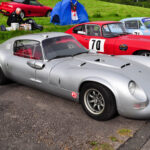
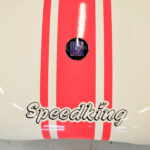
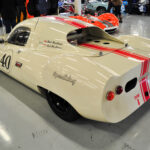
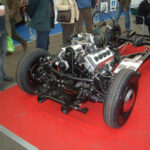
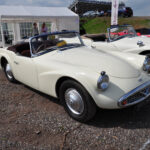




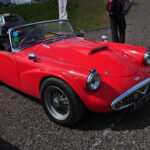
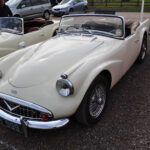
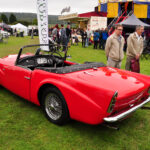

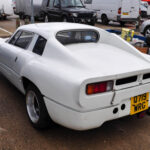
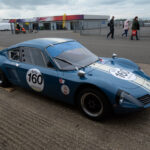
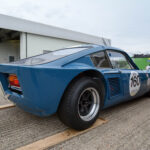
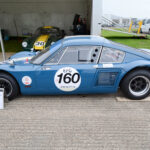
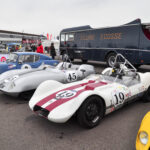

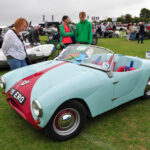

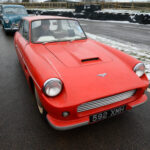
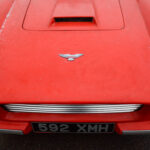
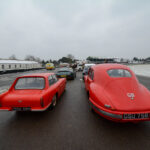
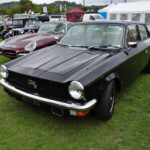
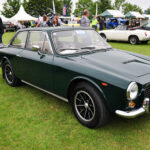
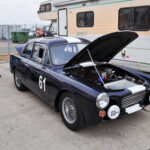

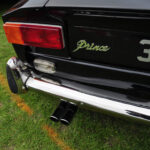
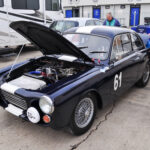

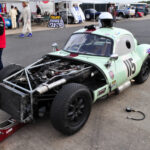
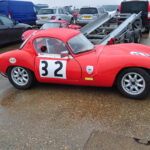

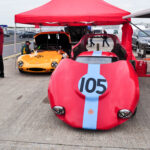
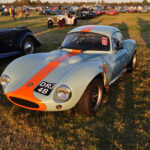
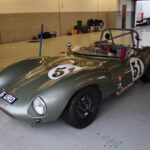
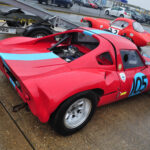


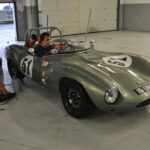

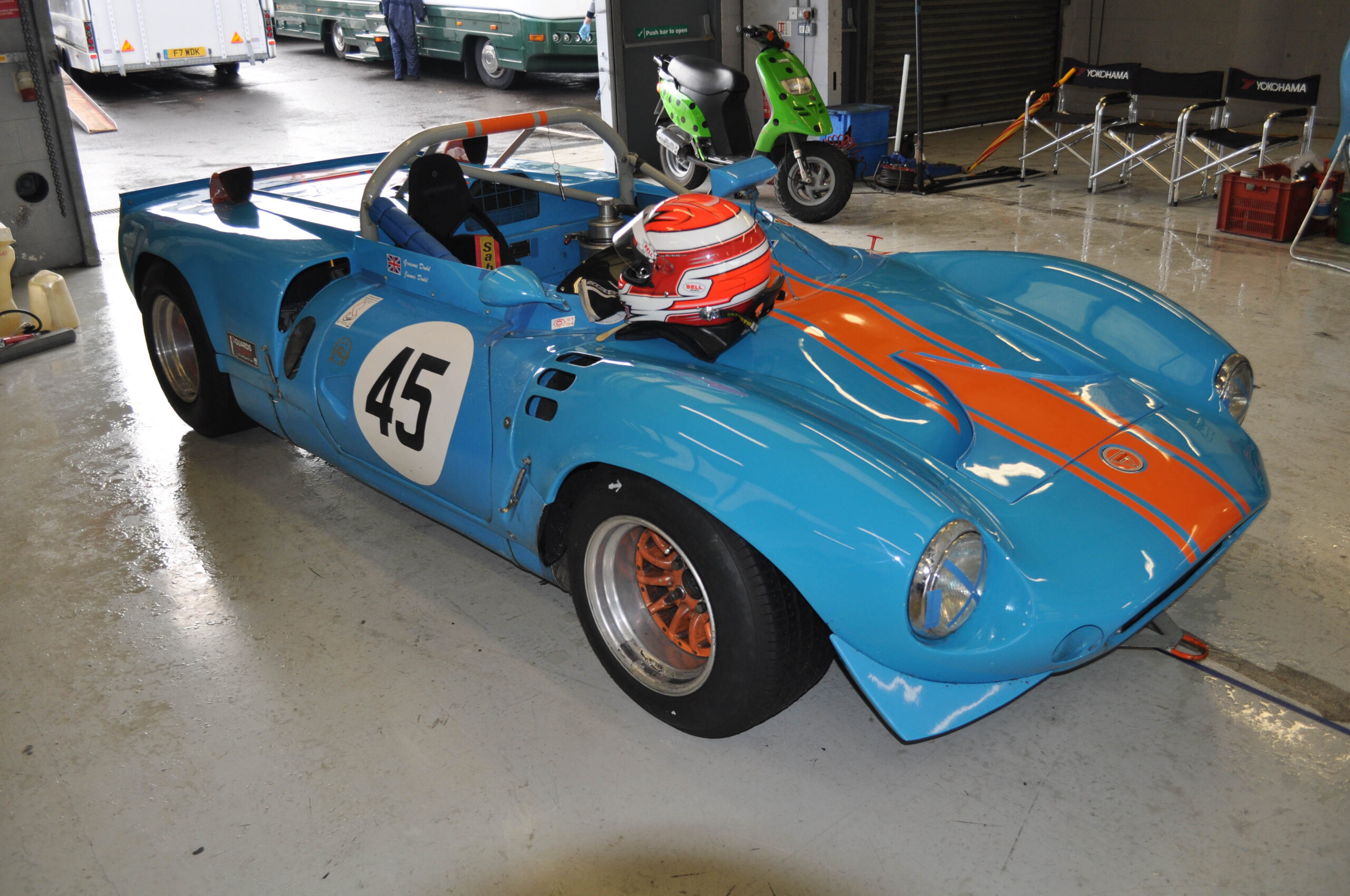
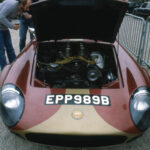

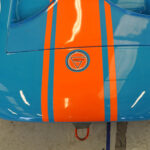

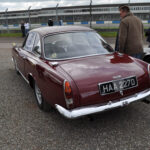
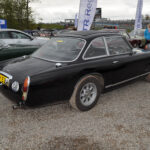


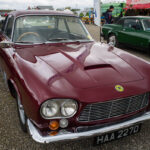
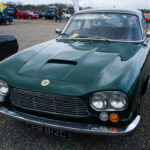
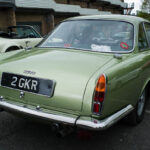
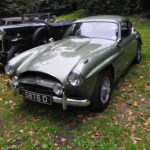

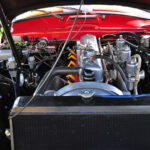

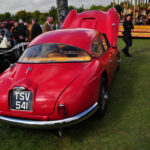
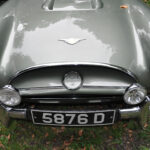
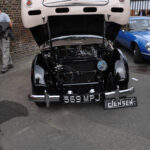


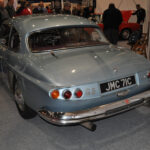
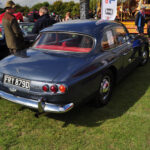
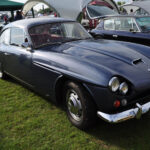
Wowcha! This is not an application for money …Unless … 😉
I need to re-read much but thanks for the focus.
Looking forward to more…
As a kid I was Imp based (long legs) – half a V8 is better than non!
We all know the politics that was the downfall of the variants but I still have a yen for my Rallye replica. Built in the street with my own two hands. And no money… sounded fab but never got anywhere.
Given you know about my Alfa fetish, the Clan/Alfa scenario could do with a few words or separate link to the Imp Club. Hmmm… Subaru nowadays?
And don’;t get me on about others than the Clan – Zagato/Darian/Nathan/Emery/Fraser/Bevan/….sweet motors all.
Bill McGovern – saloon car champ!!
Remember the dices – Ford Galaxie v Hillman Imp from our trips to Silverstone? Them were t’days!
Thanks Ken. There were so many plastic specials – it’s difficult to know where to stop with a post like this. I dare say I’ll have to apply a few updates along the way to fill the gaps but I ideally want to photograph the cars first. One thing that is clear from the reactions I’m getting is that British Plastic sparks a real streak of nostalgia in blokes of a certain age if you catch my drift!
Cheers,
Phil.
Hi CCN,
most interesting website and you’re certainly well informed. It was the Peerless that caught my eye….as its mine sat at Silverstone by the look of it!
Nigel
Hi Nigel,
If I’ve managed to capture your Peerless on camera then that’s great. Hats off to you for preserving this precious beast. I’m certain that many more people would love to know more about it. My website is about the pleasure of old motors – nothing else. Please feel free to share your experience.
Cheers,
Phil.